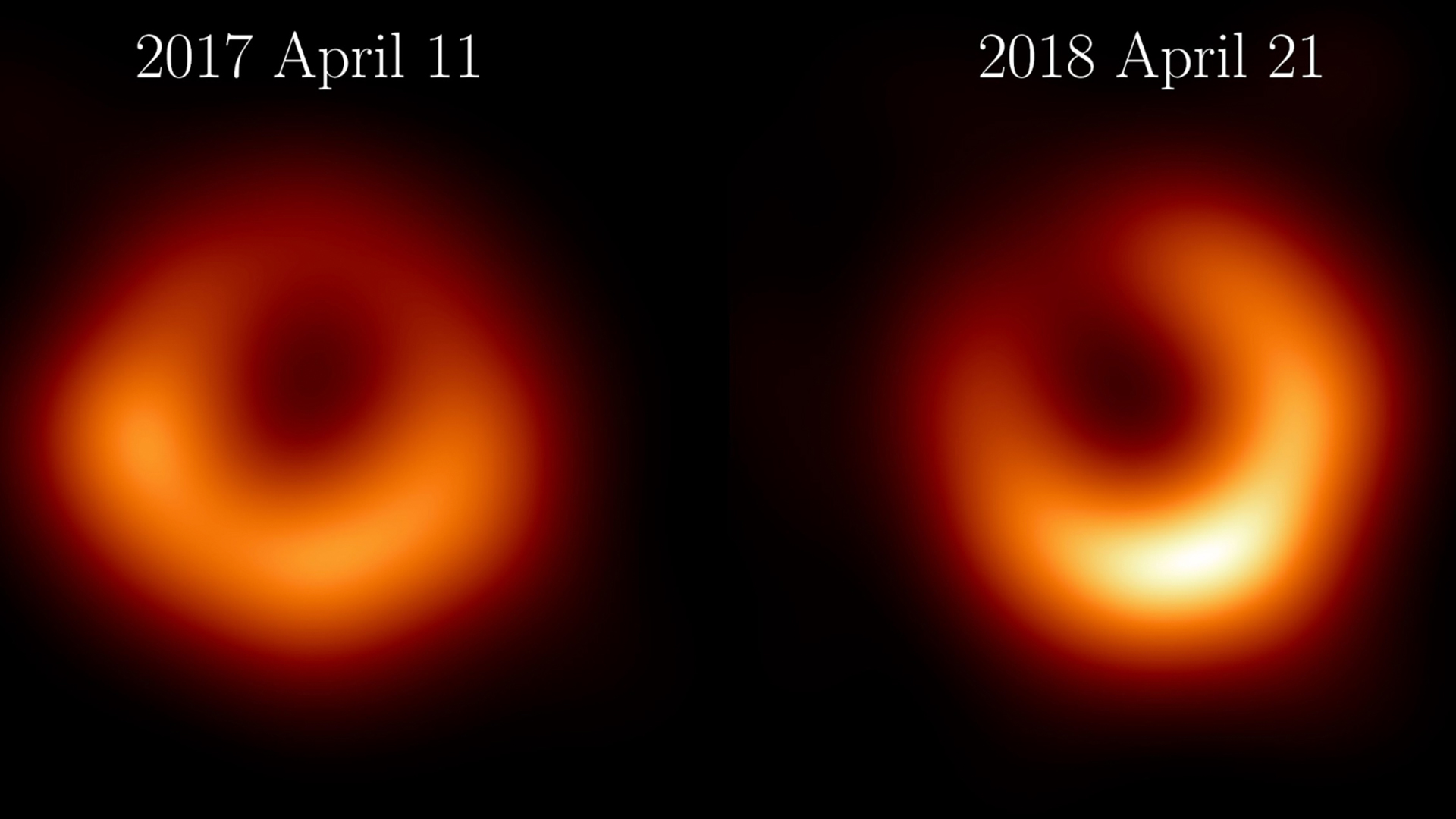Right again, Einstein: New snapshot of 1st black hole to be photographed confirms relativity
The new black hole image offers further confirmation for Albert Einstein's theory of general relativity.

In 2019, a team of scientists from the Event Horizon Telescope (EHT) Collaboration were the first to capture a close-up of a black hole.
Now, five years later, the team has released a new image of the black hole at the center of the galaxy Virgo A, dubbed Messier 87 (M87*).
Just like the first, these pictures show a dark shadow at the center of a bright golden ring. But the brightness peak of the ring has shifted by about 30 degrees compared to the first shot, while the dark heart of the cosmic behemoth is unchanged.
These properties confirm Albert Einstein's theory of relativity, according to a study published on Jan. 18 in the journal Astronomy & Astrophysics.
RELATED: James Webb telescope discovers the oldest, most distant black hole in the universe
Relativity states that the laws of physics are the same no matter where you look in the universe. If true, this would mean that the diameter of M87*'s ring should remain the same from year to year as long as the black hole's mass has not changed — and that's exactly what the researchers found.
The black hole M87* is not consuming matter, also known as accreting, fast enough to increase its mass over the duration of a human lifetime. That means that the ring size remains mostly fixed, the researchers said.
Get the world’s most fascinating discoveries delivered straight to your inbox.
However, the swirl of flattened, fast-moving gas, plasma and dust known as an accretion disk that surrounds the black hole is constantly changing.
"While general relativity says the ring size should stay pretty fixed, the emission from the turbulent, messy accretion disk around the black hole will cause the brightest part of the ring to wobble around a common center," study co-author Britt Jeter, a postdoctoral fellow at Academia Sinica Institute for Astronomy and Astrophysics, said in the statement. "The amount of wobble we see over time is something we can use to test our theories for the magnetic field and plasma environment around the black hole."
The first image of the black hole was captured using data collected prior to 2017, while this new shot uses data up until April 2018. To capture this image, scientists combined information from an array of telescopes, including several that were not used to snap the first photo, such as the Large Millimeter Telescope in Mexico and the Greenland Telescope.
"The inclusion of the Greenland Telescope in our array filled critical gaps in our earth-sized telescope," study co-author Rohan Dahale, a doctoral candidate at the Institute of Astrophysics of Andalusia in Spain, said in the statement. "The 2021, 2022, and the forthcoming 2024 observations witness improvements to the array, fueling our enthusiasm to push the frontiers of black hole astrophysics."

Kiley Price is a former Live Science staff writer based in New York City. Her work has appeared in National Geographic, Slate, Mongabay and more. She holds a bachelor's degree from Wake Forest University, where she studied biology and journalism, and has a master's degree from New York University's Science, Health and Environmental Reporting Program.


